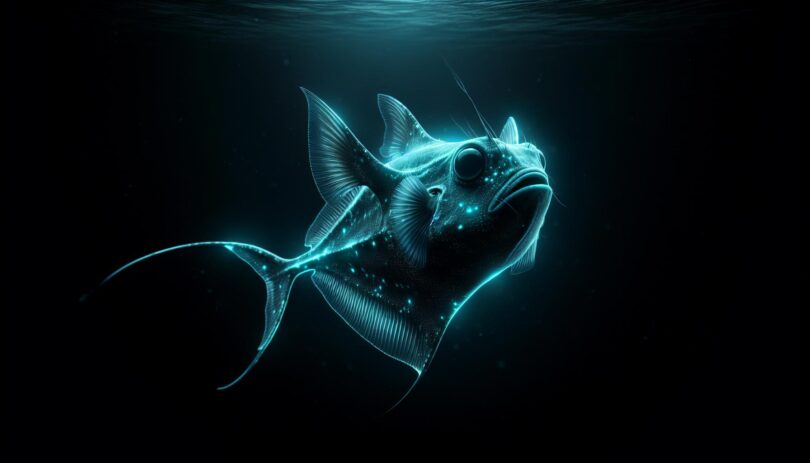Semi-aggressive freshwater fish compatibility is a hot topic among aquarium enthusiasts like myself. It’s crucial to get it right to ensure a peaceful tank environment. I’ve spent countless hours researching and observing these fascinating creatures to share my insights with you.
Mixing semi-aggressive fish with other tank mates isn’t as straightforward as it might seem. It requires a deep understanding of each species’ behavior, needs, and temperament. I’m here to guide you through the process, making it easier to create a harmonious aquatic community in your home aquarium.
What are semi-aggressive freshwater fish?
In my journey of setting up and maintaining various aquariums, I’ve learned that understanding the nature of semi-aggressive freshwater fish is crucial for a harmonious aquatic environment. These are fish that don’t generally attack without provocation but may show territorial behaviors or fin nipping towards tank mates. They often require specific conditions related to aquarium tank size, aquarium equipment, and water quality.
When starting your aquarium, it’s important to learn about each fish’s profile. Unlike their peaceful counterparts, semi-aggressive species demand more attention to aquarium setup. The ideal setup includes sufficient space, hiding spots, and an effective fish tank filter to maintain optimal water conditions. For these types of fish, an appropriately sized tank and well-thought-out arrangement can make a significant difference in mitigating aggressive behaviors.
Moreover, maintaining the right water temperature and cleanliness is crucial, highlighting the importance of a robust aquarium heater and a water conditioner for fish tank. These devices help replicate the natural habitat of semi-aggressive fish, promoting healthier and less stressful living conditions. Also, the correct aquarium light settings can influence their mood and aggression levels, something I’ve observed firsthand with my tanks.
To ensure compatibility among semi-aggressive species and their tank mates, I’ve spent countless hours researching fish profiles. This involves understanding not just their temperament but also their size, dietary needs, and preferred swimming areas in the tank. Such knowledge is invaluable in preventing conflicts and ensuring all inhabitants have their needs met, thereby fostering a more peaceful aquarium community.
Key factors to consider for fish compatibility
When I’m diving into the world of semi-aggressive freshwater fish, understanding the key factors that contribute to a peaceful aquarium environment is crucial. There’s a lot I’ve learned over the years, and I’m keen to share some insights on how to achieve a compatible community of fish.
First and foremost, fish profiles play a pivotal role. Each species has unique behaviors, dietary needs, and environmental preferences. For instance, some fish may be territorial towards others of the same species but relatively docile around different species. Therefore, reading up on the specific profiles of the fish you’re interested in is a step I can’t emphasize enough.
Another critical aspect is aquarium tank size. Remember, size does matter when it comes to housing semi-aggressive fish. A cramped space can escalate tensions, leading to confrontations. Larger tanks not only provide more swimming room but also allow for the creation of territorial boundaries, which is essential for reducing aggression.
Aquarium setup, including aquarium equipment such as filters, lights, and heaters, is also key to creating an environment where fish can thrive. A fish tank filter is indispensable, as it keeps the water clean and removes harmful toxins, thereby reducing stress among fish. Adequate aquarium light and a reliable aquarium heater ensure the right temperature and lighting conditions mimic the natural habitat of the fish, contributing to their overall well-being.
Lastly, don’t overlook the importance of water quality. Using a water conditioner for fish tank is a simple yet effective way to remove chlorine and other chemicals from tap water, making it safe for aquarium inhabitants. Pristine water conditions are essential in maintaining healthy, less aggressive fish.
Through careful consideration of these factors, I’ve found that setting up a harmonious aquarium is entirely achievable. By focusing on the needs and temperaments of semi-aggressive freshwater fish, alongside proper tank setup and maintenance, we can create a balanced ecosystem where all inhabitants can coexist peacefully.
Understanding fish behavior and temperament
When setting up an aquarium for freshwater fish, particularly semi-aggressive ones, understanding their behavior and temperament is crucial. I’ve spent years observing these captivating creatures in various setups, and I’ve learned that their environment significantly impacts their interactions. Fish profiles offer a wealth of information on specific behaviors and requirements for each species, guiding us toward creating a harmonious aquatic community.
A common misconception is that only aquarium tank size matters when housing semi-aggressive fish. While it’s true that a larger tank can reduce tension by giving fish more space to establish territories, that’s just part of the equation. Aquarium setup, including the presence of aquarium equipment like fish tank filters, aquarium heaters, and proper aquarium lighting, plays a pivotal role too. These components not only recreate a semblance of their natural habitat but also mitigate stress-inducing factors that can amplify aggression.
Another aspect I’ve noted is the importance of water conditioner for fish tanks. Tap water can contain chemicals harmful to fish, potentially escalating aggressive behaviors. Using a water conditioner stabilizes the environment, making it safer and more comfortable for semi-aggressive species. Coupled with strategic placement of hiding spots and plants, you can significantly minimize stress and aggression among tank inhabitants.
Over the years, I’ve concluded that starting your aquarium with a solid understanding of the fish’s natural behaviors and needs is more beneficial than any quick fix. It’s not just about selecting the right fish profiles for your tank but creating a well-thought-out environment that caters to their specific temperaments and social structures. By prioritizing these factors, maintaining a peaceful and healthy aquarium becomes much more achievable.
Creating a harmonious community tank
When starting your aquarium with a focus on semi-aggressive freshwater fish, crafting a peaceful community tank is entirely possible with the right knowledge and preparation. My experience has shown me that understanding fish profiles is the cornerstone of this process. Each species has unique requirements and behaviors, and overlooking these can lead to tension within the tank.
The aquarium setup plays a critical role in mitigating issues before they arise. Aquarium tank size is the first factor to consider. A cramped space can exacerbate aggressive tendencies, so I always recommend going as large as your budget and space allow. Larger tanks not only provide more territory for each fish but also offer diverse environments within the same ecosystem for various species to thrive.
Next comes the aquarium equipment necessary to maintain a healthy environment. A robust fish tank filter is non-negotiable, as it keeps the water clean and reduces stress among the tank inhabitants. Proper aquarium light and an accurate aquarium heater are also essential, ensuring that your semi-aggressive friends are living in conditions that mimic their natural habitats as closely as possible. I’ve found that the right temperature and lighting conditions can significantly impact fish behavior in positive ways.
Furthermore, the introduction of a water conditioner for fish tank can be a game-changer. It not only makes tap water safe for your aquatic pets by neutralizing harmful chemicals but also aids in maintaining the optimal water quality crucial for the health of semi-aggressive species.
Incorporating these elements into your aquarium setup necessitates a thoughtful approach, focusing on creating as natural an environment as possible for your semi-aggressive freshwater fish. This involves not just the technical aspects of water quality and temperature control but also the layout of your tank. Providing ample hiding spots and territorial boundaries through strategic placement of rocks, plants, and decorations can prevent aggression from flaring up. Remember, the goal is to replicate the complex ecosystems these species originate from, offering them a sense of security and territory within the shared space of a community tank.
Recommended semi-aggressive fish for community tanks
When considering which semi-aggressive freshwater fish to introduce to your community tank, it’s crucial to delve into fish profiles to ensure they’ll thrive together. Not every semi-aggressive species suits a community setting, but with the right aquarium setup and understanding of their needs, a harmonious tank is achievable.
Initially, when starting your aquarium, bear in mind the aquarium tank size. A spacious tank offers room for territories and reduces stress among fish. Incorporating the right aquarium equipment plays a significant role as well. A robust fish tank filter, an appropriate aquarium light, a reliable aquarium heater, and a quality water conditioner for fish tanks are essential components. These elements mimic natural habitats and promote healthy living conditions, crucial for semi-aggressive species to coexist peacefully.
A few semi-aggressive freshwater fish I’ve found to do well in community tanks include:
- Angelfish: Known for their majestic fins and diverse color patterns, angelfish demand attention. They thrive in larger tanks with plenty of vertical space to swim.
- Dwarf Gourami: Their vibrant colors and peaceful nature towards other species make them a popular choice. They appreciate well-planted tanks with hiding spots.
- Rainbowfish: Boasting iridescent scales that reflect light beautifully, rainbowfish add a dash of brilliance. They’re active swimmers and enjoy the company of similarly sized fish.
- Siamese Algae Eater: Not only are they excellent at keeping algae in check, but they also adapt well to various tank mates, promoting a clean and friendly environment.
Each of these fish has distinct preferences and temperaments, yet with thoughtful aquarium setup and maintenance, they often adapt well to life with others. Making informed decisions about fish profiles helps in assembling a harmonious community tank where semi-aggressive species can exhibit their best behavior. Remember, a happy fish is a healthy fish, and creating the right environment is key to their wellbeing.
Conclusion
Crafting a peaceful habitat for semi-aggressive freshwater fish isn’t just about aesthetics; it’s about understanding and catering to the intricate needs of each species. I’ve shared insights on how to balance the dynamics within a community tank, emphasizing the importance of space, environment, and compatibility. By selecting the right mix of species—like angelfish, dwarf gourami, rainbowfish, and Siamese algae eaters—and providing a spacious, well-equipped tank, you’re setting the stage for a thriving aquatic community. Remember, the key to success lies in diligent research, thoughtful planning, and ongoing care. With these elements in place, you’ll not only enjoy the beauty of your aquarium but also ensure a healthy, stress-free life for its inhabitants. Here’s to creating a vibrant, harmonious underwater world that reflects the best of semi-aggressive fish behavior and compatibility.



